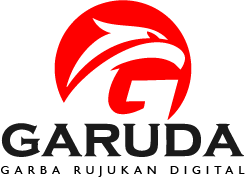Mechanical Design and Prototype of Meatball Dough Grinder and Mixer Machine for Meat Processing in Indonesian Regions
Abstract
A Meatball Dough Grinding-Mixing (MDGM) machine is a device that transforms raw meat into meatball dough through a combination of grinding and mixing processes, similar to a food processor or blender. The MDGM machine features four sharp stainless-steel blades. The rotation of the blade is driven by an electric motor with a power rating of 1 HP, operating at an engine speed of 2800 rpm. This engine speed is then transmitted through a belt pulley transmission with a diameter ratio of 3:5. The belt moves the installed blade at a rate of 1600 rpm. This MDGM machine has a capacity of 6 kg in one process. In this MDGM machine, one shaft stands vertically. The shaft has a diameter of 15 mm and a length of 400 mm. Pegs on the shaft, with dimensions of 6 mm in height and 6 mm in width, hold the rotating pulley in place when the engine is operating.
Full Text:
PDFReferences
- H. Rahmania, Sudjadi, and A. Rohman, “The employment of FTIR spectroscopy in combination with chemometrics for analysis of rat meat in meatball formulation,”. Meat Sci., vol. 100, pp. 301-305, 2015.
- S. F. Persada, R. D. Kumalasari, M. Shanti, K. Lukiyanto, G. S. Putri, C. A. Ramadhan, M. N. Young, and Y. T. Prasetyo, “How Social Media Reacting to Bakso Malang as Culinary Business on Post Covid 19: A Sentiment Analysis,” Proc. Comput. Sci., vol. 234, pp. 463-469, 2024.
- E. Kurniawati, A. Rohman, and K. Triyana, “Analysis of lard in meatball broth using Fourier transform infrared spectroscopy and chemometrics,” Meat Sci., vol. 96, pp. 94-98, 2014.
- D. D. Sinaga, Herpandi, and R. Nopianti, “Karakterisitik Bakso Ikan Patin (Pangasius pangasius) dengan Penambahan Karagenan, Isolat Protein Kedelai, dan Sodium Tripolyphospat,” Jurnal Teknologi Hasil Perikanan, vol. 6, no. 1, pp. 1-13, 2017. (In Indonesian).
- A. Saputrayadi, Asmawati, Marianah, and Suwati, “Analisis Kandungan Boraks dan Formalin pada Beberapa Pedagang Bakso di Kota Mataram,” Jurnal Agrotek Ummat, vol. 5, no. 2, pp. 107-116, 2018. (In Indonesian).
- S. M. Nasaruddin, S. P. Utama, and A. Andani, “Nilai Tambah Pengolahan Daging Sapi Menjadi Bakso pada Usaha Al-Hasanah di Kelurahan Rimbo Kedui Kecamatan Seluma Selatan.” Agrisep, vol. 14, no. 1, pp. 85-96, 2015. (In Indonesian).
- A. Astati, “Tingkat Perubahan Kualitas Bakso Daging Sapi Bali Bagian Sandung Lamur (Pectoralis profundus) Selama Penyimpanan dengan Pemberian Asap Cair,” Jurnal Teknosains, vol. 7, no. 1, pp. 10-19, 2013. (In Indonesian).
- M. C. Pamungkas, B. D. Probowati, and I. Maflahah, “Pengukuran Preferensi Konsumen Bakso,” Agrointek, vol. 8, no. 1, pp. 32-39, 2014. (In Indonesian).
- M. Fulton, Encyclopedia of Food and Cookery, New York: Gallery Books, 1986.
- B. Duong and M. Kiesel, Simple Art of Vietnamese Cooking, New Jersey: Prentice Hall Press, 1991
- V. R. Redden and T. Chen, “The Potential Chinese Meatballs and Dried Meat as Value Added PSE Pork Product,” Food Australia, vol. 47, pp. 323-326, 1995.
- M. Serdaroglu and O. Degirmencioglu, “Effects of Fat Level (5%, 0%, 20%) and Corn Flour (0%, 2%, 4%) on Some Properties of Turkish Type Meatballs (Koefte),” Meat Sci., vol. 68, pp. 291-296, 2004.
- F. Jimenez-Colmenero, J. Carballo, and S. Cofrades, “Healthier Meat and Meat Products: Their Role as Functional Foods,” Meat Sci., vol. 59, pp. 5-13, 2001.
- Badan Standardisasi Nasional, SNI 01-3818-1995: Bakso Daging, Jakarta: Badan Standardisasi Nasional, 1995. (In Indonesian).
- E. S. Widyastuti, Studi tentang Penggunaan Tapioka, Pati Kentang dan Pati Modifikasi dalam Pembuatan Bakso Daging Sapi (Study on the Incorporation of Tapioca Starch, Potato Starch and Modified Starches in the Production of Beef Bakso), Malang: Brawijaya University, 1999.
- B. D. Tobin, M. G. O’Sullivan, R. M. Hamill, and J. P. Kerry, “The Impact of Salt and Fat Level Variation on the Physio-Chemical Properties and Sensory Quality of Pork Breakfast Sausages,” Meat Sci., vol. 93, pp. 145-152, 2013.
- S. Banon, P. Diaz, G. Nieto, M. Castillo, and D. Alvarez, “Modelling the Yield and Texture of Comminuted Pork Products Using Color and Temperature. Effect of Fat/Lean Ratio and Starch,” Meat Sci., vol. 80, pp. 649-655, 2008.
- I. Allais, C. Viaud, A. Pierre, and E. Dufour, “A Rapid Method Based on Front-Face Fluorescence Spectroscopy for the Monitoring of the Texture of Meat Emulsions and Frankfurters,” Meat Sci., vol. 67, pp. 219-229, 2004.
- Z. L. Kang, Y. F. Zou, X. L. Xu, C. Z. Zhu, P. Wang, and G. H. Zhou, “Effect of Various Amount of Pork and Chicken Meat on Sensory and Physicochemical Properties of Chinese-Style Meatballs (Kung-wan).” Food Sci. Technol. Res., vol. 19, pp. 963-970, 2013.
- Z. L. Kang, Y. F. Zou, X. L. Xu, C. Z. Zhu, P. Wang, and G. H. Zhou, “Effect of a Beating Process, As a Means of Reducing Salt Content in Chinese-Style Meatballs (Kung-Wan): A Physico-Chemical and Textural Study.” Meat Sci., vol. 96 pp. 147-152, 2014,.
- Z. L. Kang, P. Wang, X. L. Xu, C. Z. Zhu, K. Li, and G. H. Zhou, “Effect of a Beating Process, As a Means of Reducing Salt Content in Frankfurter: A Physico-Chemical and Raman Spectroscopic Study.” Meat Sci., vol. 98, pp. 171-177, 2014.
- G. Domek, A. Kołodziej, M. Dudziak, and T. Woźniak, “Identification of the Quality of Timing Belt Pulleys,” Proc. Eng., vol. 177, pp. 275-280, 2017.
- P. P. Jombo and G. A. Adetona, “Computer-Aided Design of Belts and Pulley Systems,” Nigerian J. Eng. Res. Dev., vol. 2, pp. 1-11, 2003.
- F. Sorge, “A Qualitative-Quantitative Approach to V-Belt Mechanics,” J. Mech. Des., vol. 118, pp. 15-21, 1996.
- G. Gerbert, Traction Belt Mechanics, Göteborg: Chalmers University of Technology, 1999.
- G. Gerbert and F. Sorge, “Full Sliding ‘Adhesive-Like’ Contact of V-Belts,” J. Mech. Des., vol. 124, pp. 706-712, 2002.
- N. A. Raji, A. A. Erameh, A. A. Yussouff, and R. O. Durojaye, “Response Surface Methodology Approach for Transmission Optimization of V-Belt Drive,” Modern Mech. Eng., vol. 6, pp. 32-43, 2016.
- L. Kong, Coupled Belt-Pulley Mechanics in Serpentine Belt Drives, Colombus: The Ohio State University, 2003.
- R. H. A. Haq, M. F. Hassan, S. Mahmood, and M. H. A. Hamid. “Fish Ball Maker Machine for Household Chores,” J. Des. Sustain. Environ., vol. 1, pp. 1-6, 2019.
- J. E. Shigley and C. R. Michke, Mechanical Engineering Design - 8th ed., New York: McGraw Hill, 2008
- B. P. Patel, H. R. Prajapati, and D. B. Thakar, “Critical Review on Design of Shaft with Multiple Discontinuities and Combined Loadings,” Proc. Int. Conf. Contemp. Issue. Eng. Technol., pp. 7-14, 2014.
- M. G. D. Marudachalam, K. Kanthavel, and R. Krishnaraj, “Optimization of Shaft Design under Fatigue Loading Using Goodman Method,” Int. J. Sci. Eng. Res., vol. 2, pp. 1-5, 2011.
- A. A. Adekunle, S. B. Adejuyigbe, and O. T. Arulogun, “Development of CAD Software for Shaft under Various Loading Conditions,” Proc. Eng., vol. 38, pp. 1962-1983, 2012.
- D. K. Padhal and D. B. Meshram, “Analysis and Failure Improvement of Shaft of Gear Motor in CRM Shop,” Int. J. Eng. Sci., vol. 3, pp. 17-24, 2013.
- S. G. Kolgiri, S. D. Martande, N. S. Motgi, and S. Nitin, “Stress Analysis for Rotor Shaft of Electric Motor,” Int. J. App;. Innov. Eng. Manag., vol. 2, no. 7, pp. 136-141, 2013.
- R. S. Khurmi and J. K. Gupta, Text Book of Machine Design, Kolkata: Eurasia Publishing House, 2005.
Refbacks
- There are currently no refbacks.







